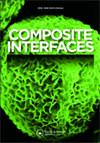Fabrication, characterization and performance analysis of different Ag/PVA nanocomposite membranes for debenzenation of model pyrolysis gasoline using pervaporation
IF 2.4
4区 材料科学
Q3 MATERIALS SCIENCE, COMPOSITES
引用次数: 0
Abstract
ABSTRACT According to EURO IV and EURO V, benzene in gasoline should not exceed 1 volume%, to prevent environmental pollution and health risks; hence benzene must be removed from pyrolysis gasoline (octane booster), before blending with gasoline. Polyvinyl alcohol (PVA) based membranes are quite effective for pervaporative separation of hydrocarbon mixtures. The main objective of this work is to fabricate insitu Ag/PVA nanocomposite membranes, using simple solution casting approach, for pervaporative separation of benzene from model pyrolysis gasoline (mixture of benzene/1-octene). Debenzenation of pyrolysis gasoline using PVA-based polymeric membranes was not reported by earlier researchers. The impact of incorporation of nano-Ag in the PVA matrix, on the pervaporative performance of the PVA membrane towards benzene, based on the swelling coefficient, fractional free volume, total flux, separation factor and activation energy, is the novelty of this study. Scanning Electron Microscopy, Transmission Electron Microscopy, mechanical strength, UV-Vis spectroscopy, Fourier Transform Infrared Spectroscopy were used to characterize all the fabricated membranes. The most suitable composite membrane for the intended purpose was identified. The maximum flux and highest separation factor of the said membrane are 4.05 kg/m2/h and 5.51 respectively at 343K operating temperature and 1 mm Hg downstream pressure. GRAPHICAL ABSTRACT不同Ag/PVA纳米复合膜的制备、表征及性能分析
本文章由计算机程序翻译,如有差异,请以英文原文为准。
求助全文
约1分钟内获得全文
求助全文
来源期刊

Composite Interfaces
工程技术-材料科学:复合
CiteScore
5.00
自引率
3.80%
发文量
58
审稿时长
3 months
期刊介绍:
Composite Interfaces publishes interdisciplinary scientific and engineering research articles on composite interfaces/interphases and their related phenomena. Presenting new concepts for the fundamental understanding of composite interface study, the journal balances interest in chemistry, physical properties, mechanical properties, molecular structures, characterization techniques and theories.
Composite Interfaces covers a wide range of topics including - but not restricted to:
-surface treatment of reinforcing fibers and fillers-
effect of interface structure on mechanical properties, physical properties, curing and rheology-
coupling agents-
synthesis of matrices designed to promote adhesion-
molecular and atomic characterization of interfaces-
interfacial morphology-
dynamic mechanical study of interphases-
interfacial compatibilization-
adsorption-
tribology-
composites with organic, inorganic and metallic materials-
composites applied to aerospace, automotive, appliances, electronics, construction, marine, optical and biomedical fields
 求助内容:
求助内容: 应助结果提醒方式:
应助结果提醒方式:


